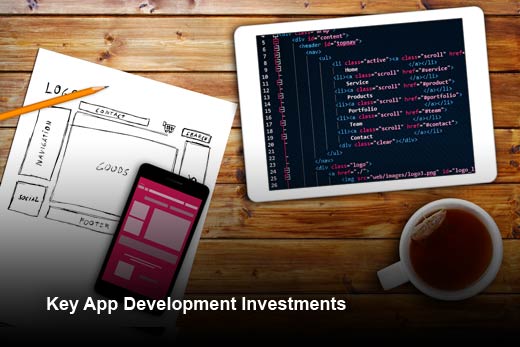When planning an app development roadmap, it’s unfortunately all too common for teams to create a checklist that focuses on hiring the right programmers and hammering out a plan for rapid user acquisition and monetization. Of course, these are extremely important objectives – for example, a sound monetization strategy is the bread and butter of any successful product. However, attending to these items exclusively is a hasty and ill-advised strategy. All app development teams should ensure their checklists include a number of other points as well.
In this slideshow, the Baidu Mobile development team from Chinese search giant Baidu offers insights into five factors that might be afterthoughts for some development teams, but should be elevated to core components of the planning process.
Failure to invest in these key items upfront could result in a substantial amount of lost time and money down the road. The good news? If you integrate these things into your app development plan from the get-go, you’ll be able to reduce marketing and user acquisition costs significantly.
Key App Development Investments
Click through for five app development components organizations should invest in to reduce costs and increase the probability of success, as identified by the Baidu Mobile development team.
A Growth Hacking Strategy
Growth hacking is the science (or, some might call it quasi-art) of engineering a growth mechanism right into your product, and continually iterating on it to boost your user base. One famous example of growth hacking is Gmail’s invitation-only accounts when the product first launched. Companies can also conduct growth hacking through incentives, as Dropbox did by offering free storage space to users who referred their friends to the service.
These days, a social virality mechanic is essential. Make sure that someone on your team understands A/B testing and has an analytical mind. The most successful products have a strong sharing incentive built right into them. Pokémon GO, anyone?
An Enjoyable, Intuitive and Functional UI
There’s a saying among user interface geeks: “A product interface is like a joke. If you need to explain it, it just isn’t that good.” We all know from experience that this is true, but it’s easy to overlook a dysfunctional UI on your own product, especially when you’re so familiar with it.
Bring in trusted friends (especially non-techy people) at an early stage to provide honest feedback on your app’s usability. Don’t push back the way Richard Hendricks does in the HBO comedy Silicon Valley. Instead, take the feedback to heart and commit to fixing any perceived problems. This is particularly important because once the product is launched, it’s often too difficult to change the UI on a fundamental level.
Audience Insight
The more audience insights you can get, the better. Does your product address a real need that people have? Who will be using it and for what purpose?
These are scary questions to ask once development is already in full swing, so smart teams hold brainstorming sessions to consider their audience needs as early in the process as possible. It can also be very informative to conduct a third-party survey prior to laying down your first line of code.
Non-Programming Team Members
Countless research studies have examined optimal group dynamics, and one thing they consistently reveal is the importance of having teammates with varying perspectives.
Try to have at least one person on your team who specializes or previously specialized in a field other than programming. On a certain level this might sound counterintuitive to creating a well-oiled team, but you’d be surprised to hear the valuable insights that someone with a different background can bring to the table. It might even inspire a revelation that could cause your team to rethink your entire approach.
A Shared Vision
While it’s important to build a team with diverse experience and a wide arsenal of skills, it’s even more critical that everyone is on the same page in terms of objectives and goals.
If you’re a smaller startup, your team members will likely need to eat and breathe your product, metaphorically. Even a small amount of disinterest or dissatisfaction could have disastrous implications for the team and the whole project. Make sure that you build a team that loves your product, loves your mission and cooperates exceptionally.








